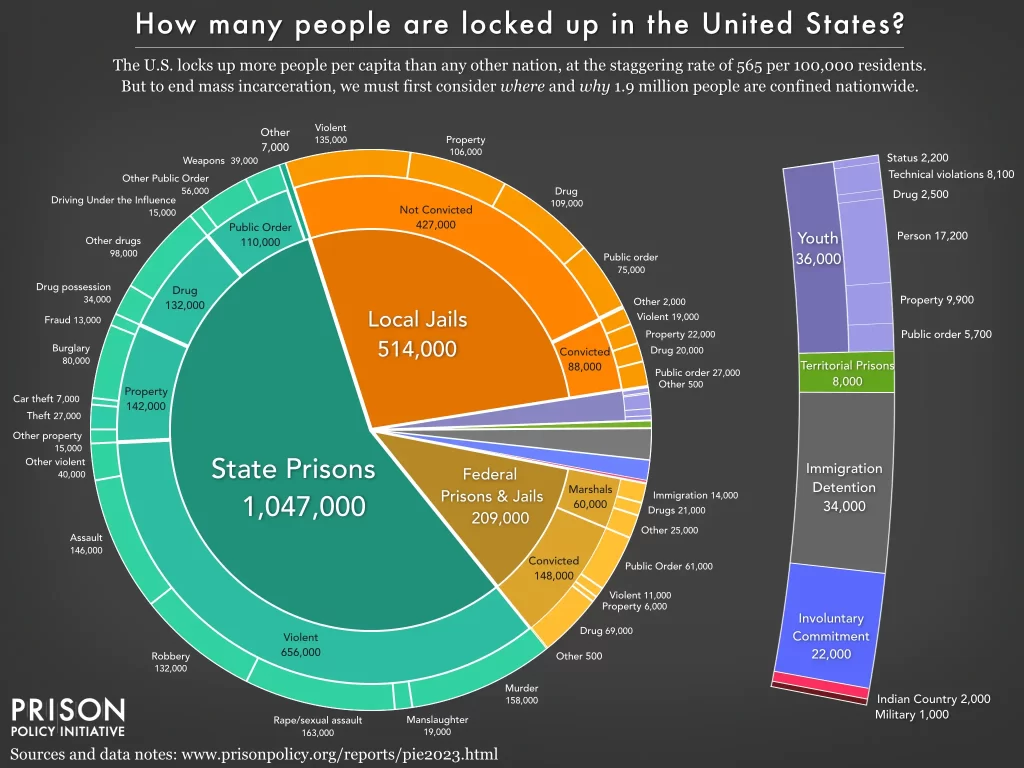The “mass incarceration” myth is pervasive — primarily among laypersons and so-called criminal justice activists. We hear about it, ad nauseam, and believe it without question. The mass incarceration narrative is also widely accepted among academics and policymakers. Critical scrutiny has been absent — and false claims about the American criminal justice system have become axiomatic truths. But is any of it true?
University of Pennsylvania Carey Law School Professor Paul H. Robinson, a leading criminal justice scholar, together with Jeffrey Seaman, have written a thought-provoking paper on the myths of mass incarceration. It’s well worth the read.
Robinson tackles four myths about the mass incarceration narrative that underlie most calls for reform. These myths include:
– The Myth of Prison Composition
– The Myth of Continual Increase
– The Myth of Foreign Comparisons
– The Central Myth: Exceptional and Unjustified U.S. Punitiveness
Let’s begin with who’s in prison. Mass incarceration activists often tell us that prisons are bursting at the seams, packed with non-violent, first time drug possessors. Notably, only 17% of the prison population is comprised of drug offenders. Moreover, most incarcerated drug offenders have been convicted of much more serious drug-related crimes. Robinson notes:
“There are 34,000 state prisoners serving sentences for drug possession, compared to 98,000 state prisoners serving sentences for more severe drug crimes (i.e., drug trafficking). Even more lopsidedly, of the 69,000 federal drug offenders, 99% or more are serving sentences for drug trafficking. In other words, just 17% of drug offenders in prison are serving sentences for drug possession (many of which may have been plea bargained down from more serious offenses). Only 3% of the total prison population is made up of those sentenced for drug possession.”
These numbers should be startling for anyone who thinks that releasing those convicted of low-level drug possession charges would solve any perceived mass incarceration problem. In fact, the percentage of violent offenders in prison has steadily increased over the last 60 years, comprising only 41% of the prison population in 1960 to 62% in 2021. The Prison Policy Initiative provides additional information on the American prison population.
What about the ever-growing prison population? Robison acknowledges that the prison population is much larger today than it was in 1960 – steadily growing decade after decade. However, the prison population has actually been declining since 2009. Moreover, he analyzes various “non-sentencing factors” that reasonably explain why prison populations grew over the last 70 years. These factors include: an increase in population, higher crime rates, the deinstitutionalization of the mentally ill, a more effective criminal justice system, more serious offender criminal histories, new criminal statutes and better enforcement, and several other factors.
Robinson then turns to comparisons between the American criminal justice system and other developed nations, noting:
“There is certainly some truth to the mass incarceration narrative’s comparisons: America does appear to use prison as a punishment more often than other Western democracies, and America should take note of the wider use of non-incarcerative punishments in some foreign countries. However, the mass incarceration narrative rarely pauses to consider the confounding factors that make prison population comparisons difficult, and it never stops to question whether America’s higher per capita incarceration rate compared to many other countries reveals a problem in foreign countries instead of America’s justice system. Such motivated comparisons often fail to see how flawed foreign justice systems are and how much they may have to learn from the U.S.”
Robinsons concludes that higher levels of incarceration in the United States over the last 70 years is less about overly punitive criminal justice policy, but rather more attributable to other factors that reasonably explain, and oftentimes justify, large prison populations. Robinson writes:
“The myth of exceptional and unjustified American punitiveness overlooks the role of non-sentencing factors in the rise of incarceration, overstates punishment increases, and falsely assumes that any punishment increases that did occur were inappropriate.”
While mass incarceration activists, policymakers, and their pals in academia may be overstating their case and failing to scrutinize the conventional narrative, Robinson does leave room for some reform and discusses some options for change.
The bottom line is — don’t let the mass incarceration crowd fool you. Conventional wisdom can often be wrong. Question the orthodoxy, dig in, scrutinize, think big, and consider the details. If you’re interested in additional information on this and related issues, I recommend Barry Latzer’s “The Myth of Overpunishment” and Rafael Mangual’s “Criminal (In)justice.”
John Q. Prosecutor

